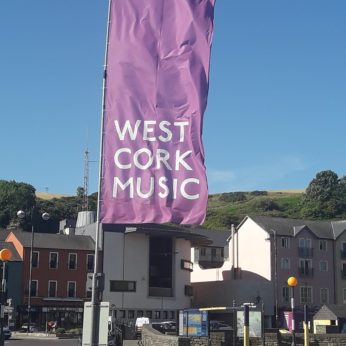Composer: Antonin Dvořák (b. 1841 - d. 1904)
Performance date: 04/07/2017
Venue: St. Brendan’s Church
Composition Year: 1883
Duration: 00:42:09
Recording Engineer: Richard McCullough, RTÉ lyric fm
Instrumentation Category:Piano Trio
Artists:
Camille Thomas -
[cello]
Julius Drake -
[piano]
Tamsin Waley-Cohen -
[violin]

Dvo?ák’s
success as a composer was first established during the 1870s. This
success was based on music with strong Czech or Slav roots. His
operas all had librettos in Czech and by far his most popular works
were Slavonic Dances and Rhapsodies. By the early 1880s his success
as a Czech composer had begun to grate with audiences in Vienna. His
third Slavonic Dances had not been well received and Hans Richter,
the conductor of the Vienna Philharmonic, repeatedly postponed the
first Viennese performance of Dvorak’s Sixth Symphony.
Dvo?ák
was torn between his allegiance to his homeland and his admiration
for German music. He really did not wish to have to choose between
Prague and Vienna and in his music, he would always combine both
German and Czech influences. Around 1883-5, his music became more
German in character. Whether this was, as some commentators have
suggested, an attempt to improve relations with Vienna or whether it
was for simply artistic reasons, it is hard to tell. For whatever
reason, the music Dvo?ák composed in this period is considered some
of the finest he ever wrote; in particular the Seventh Symphony and
the F minor Piano Trio.
In
December 1882, Dvo?ák’s mother had died. This Piano Trio was
written in the early months of 1883. Its serious and tempestuous
character suggests that it was the composer’s response to her
death. The first movement of the trio is the longest and most
substantial. It begins softly on the strings. Soon we are thrown into
a turbulent, romantic world of drama and passion. Dvo?ák often
combines the violin and cello either playing in unison or an octave
apart. This means they can balance the piano even at full volume.
This Trio is often considered to be Brahmsian. But even Brahms would
have been hard put to match this music in terms of passion and
turbulence.
The
second movement which plays the role of a traditional scherzo was
originally placed third. Dvo?ák rightly realised that some kind of
relief was needed after the first movement. Since this movement is in
two time rather than three, it can hardly be considered a dance.
Minor keys still predominate but the mood is generally more relaxed.
The
poco
adagio
is considered one of his finest slow movements. The opening two
ideas, the first solemn, the second less so, provide him with the
material for the whole movement. For much of the time, the violin and
cello either play in unison as before or in canon. In some of the
most poignant passages, the violin sings in a high register
accompanied by broken chords on the piano. The solo piano introduces
an exquisite coda. Here calm and rest are finally achieved.
The
Finale combines German rigour with Czech charm. It is in three time
although this is not obvious from the opening theme. Later on in the
movement, Dvo?ák introduces a woozy waltz before returning to more
rigorous musical development. The emotional turmoil of the first
movement is largely, if not completely forgotten, as this magnificent
piano trio ends with a vivace
flourish.
Copyright © 2025 West Cork Music. All rights reserved.
Designed and developed by Matrix Internet